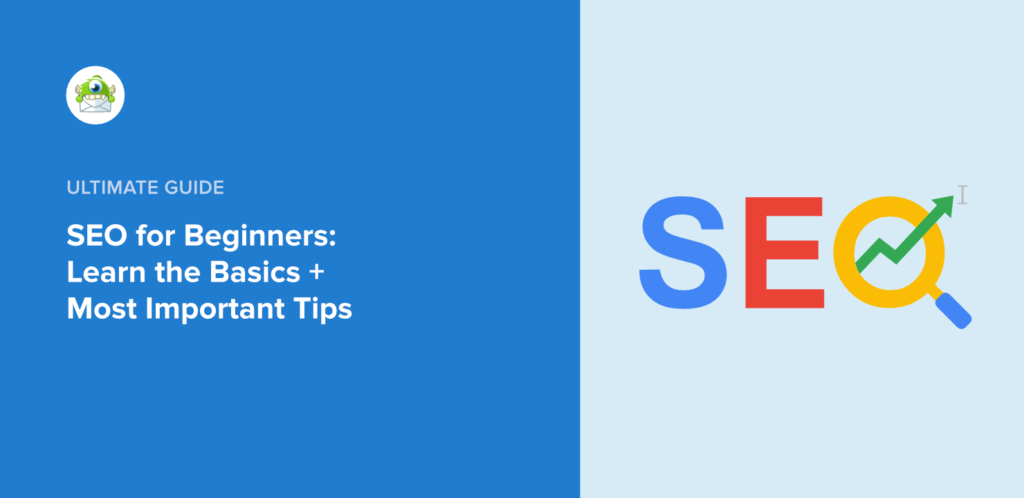Search Engine optimization (SEO) is the backbone of digital marketing.

Whether you are starting now or looking to refine your skills, it is important to understand the difference between the initial level SEO and advanced on-position strategy. This blog will break the basics for new people and dive into advanced strategies for those ready to take your SEO game to the next level. let’s get started!
SEO for Beginners: Laying the Foundation
If you are new to SEO, think of it as a process of customizing your website, so that search engines like Google can easily understand and rank it. The target search results are to attract more organic (non-payment) traffic. Here are the major components that should focus on every beginner:

1. Keyword research
There are keyword words or phrases that people type in search engines. Start by identifying the terms of finding your target audience. Use free tools such as Google Keyword Planner or Ubersugges to find relevant keywords with decent search volume and low competition. Pay attention to long-tail keywords (eg, “best running shoes for beginners”) as they are easy to rank and often have high in intentions.
2. On-page SEO Basis Title Tags
These are in clicking headlines that you see in search results. Place them under 60 characters and include your primary keywords. Meta Description: Write a compelling summary (under 160 characters) that encourages users to click on your site. Heading (H1, H2, H3): Use titles for the structure of your content. Your main title should be H1, and your subheading is H2 or H3. URL structure: Keep the URL small, descriptive, and keyword-rich (eg, www.example.com/best-running-shoes).
3. content creation Write high-quality
Original materials that answer your audience’s questions. Use your targeted keywords naturally throughout the content, but avoid keyword stuffing (unnatural overstating keywords). Target for at least 800–1,000 words per post, as long content performs better in search rankings.
4. Internal linking Link
The search engine to other pages on your website to help understand the structure of your site and to help users engage. For example, if you are writing about “Best Running Shoes”, link to the respective posts like “How to do
5. Mobile adaptation
Make sure your website is mobile-friendly, as most users brow the web on their phones. Use the responsible design to make your site favorable to different screen sizes. 6. Page speed Slow-loading websites disappoint users and hurt the ranking. Use Google Pagespeed Insights such as tools to identify and fix speed issues.
Advanced On-Page SEO Tactics: Taking It to the Next Level
Once you mastered the basics, the time has come to detect the advanced on-page SEO strategy.

These strategies require more effort and technical knowledge, but your ranking and traffic can be greatly boosted.
1. Cementic SEO
Search engines have become smarter and now focus on the context of materials rather than only keywords. Use LSI (latent sequencing sequencing) keywords – Terms related to your primary keyword – to help the search engine better understand your content. For example, if your primary keyword is “running shoes”, it includes words like “athletic footwear,” “running gear,” or “marathon training”.
2. Material optimization with AI
Tools such as Surfer SEO or Clearscope analyze top-ranking pages for your target keywords and provide recommendations to customize your content. These devices suggest the inclusion of ideal word calculations, keyword densit,y, and related words, to ensure that your content is fully adapted.
. 3. Schema markup
Schema markup is a type of microdata that helps the search engine to understand your content better. This can increase your search listing with rich snipes, such as star ratings, FAQs, or product prices. Use tools such as Schema.org or Google’s structured data markup helper to add a schema to your site.
4. Image optimization
To improve the speed of the page, optimize images by compressing them (without losing quality). Use descriptive file names and ALT text that includes your target keyword. For example, instead of “img123.jpg”, use “best-earning-for-biginners.j JP”.
5. Cures cannibal Keyword
cannibalism occurs when many pages on your site target the same keywords that confuse the search engine. Identify and fix this issue: To consolidate the same pages. Using the prescribed tag to indicate the favorite version of a page. Update the internal link to indicate the correct Using the prescribed tag to indicate the favorite version of a page. Update the internal link to indicate on the right page.
6. Advanced internal linking
Go beyond basic internal linking using strategic anchor text. For example, instead of “Click here”, use descriptive texts such as “learn more about running shoe type”. Create material clusters by grouping related articles around a central column page. It helps in establishing timely rights.
7. User Experience (UX)
Adaptation Improve UX by reducing the boom rates and by reducing the growing time on the site. Use SITEmap (eg, hotter) to analyze the user’s behavior and make data-operated design changes. Make sure that your site is easy to navigate, with clear call-to-action (CTAS) and minimal distraction.
8. Voice search optimization
With the rise of voice assistants such as Siri and Alexa, adaptation is important for voice search. Pay attention to natural language and conversational phrases. For example, instead of “Best Running Shoes”, Lakshya “What are the best running shoes for beginners?”
9. Content Updates
- Regularly update old content to keep it relevant and accurate. Search engines favor fresh, up-to-date information.
- Add new sections, update statistics, and refresh keywords to maintain your rankings.
SEO for Beginners vs. Advanced Tactics: Key Differences
| Aspect | Beginner SEO | Advanced On-Page SEO |
|---|---|---|
| Focus | Basics like keywords and meta tags | Context, user experience, and technical optimizations |
| Tools | Free tools (e.g., Google Keyword Planner) | Advanced tools (e.g., Surfer SEO, Ahrefs) |
| Content | General, keyword-focused content | In-depth, semantically optimized content |
| Technical Knowledge | Minimal | High (e.g., schema markup, cannibalization fixes) |
Ready to take your website to the next level? Whether you’re just starting with SEO or need advanced strategies, our expert team is here to help. Contact us today for a free consultation and let’s grow your business together
